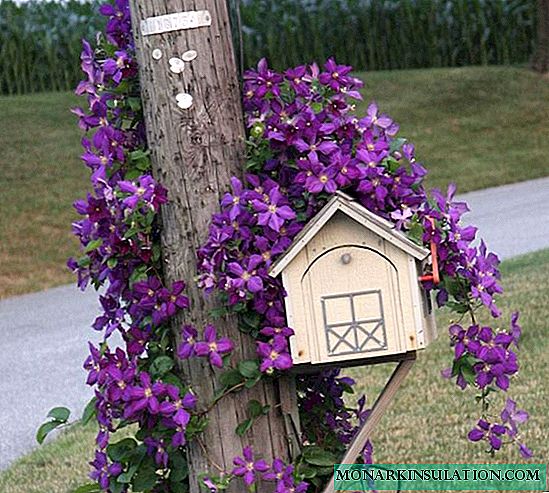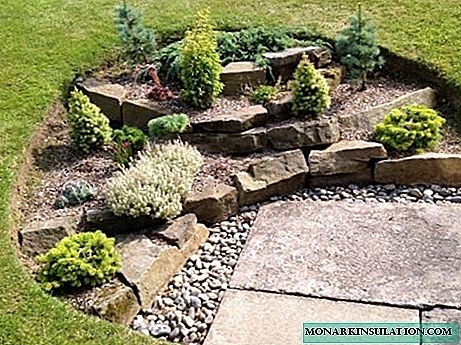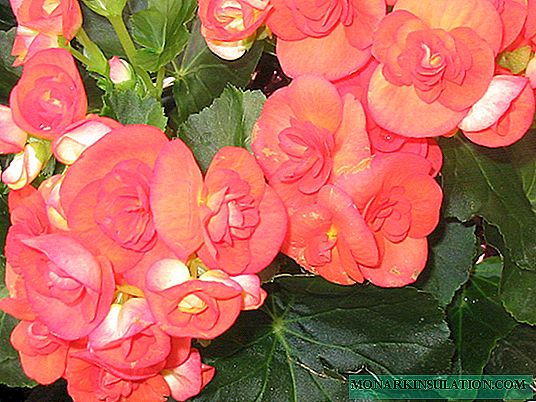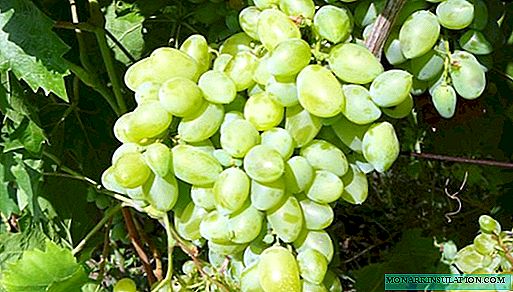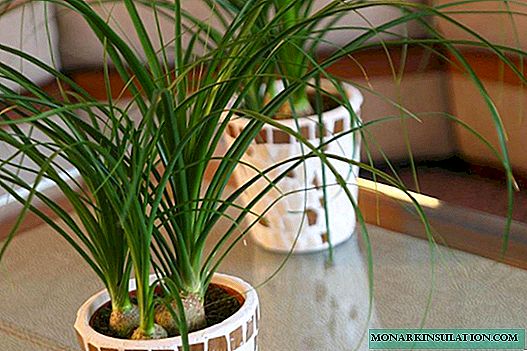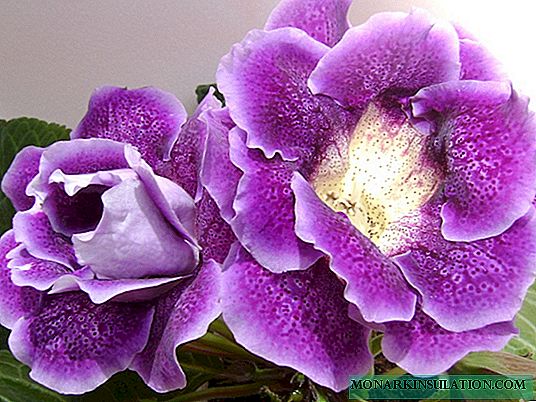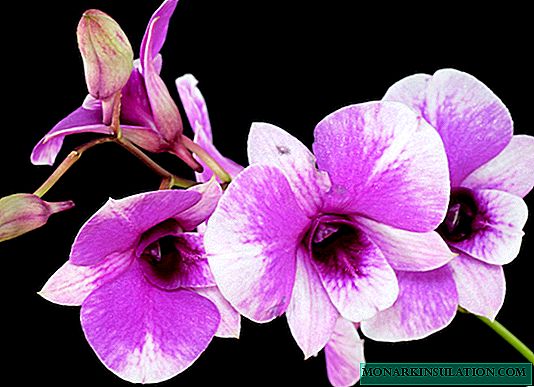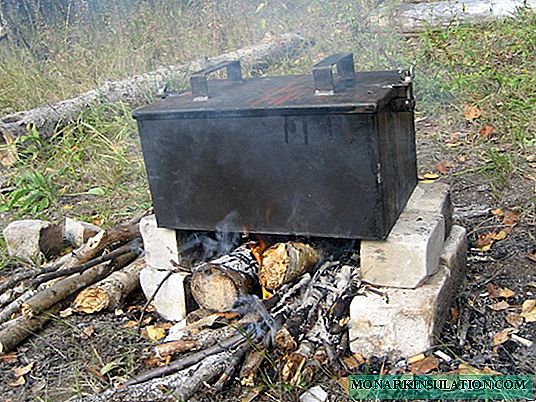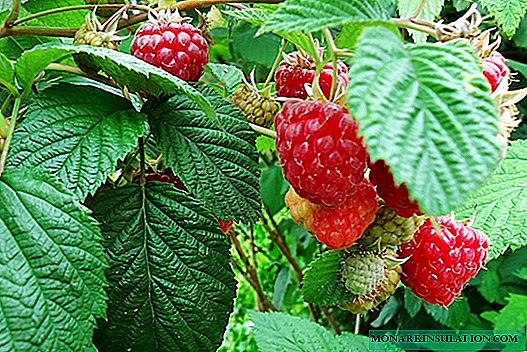
Sweet and fragrant raspberry berries are loved by children and adults. But growing this shrub, gardeners often encounter diseases and pests, due to which a large part of the crop is lost, and in some cases the whole plant dies. What exactly threatens raspberries in our areas and how to protect it?
Raspberry disease
Raspberries often suffer from various diseases. The reason for their appearance may be:
- mushrooms;
- bacteria
- viruses and mycoplasmas close to them.
Fungal infections
Fungal infections are a real scourge of raspberry plantings. They easily enter its tissues through the stomata, cuttings and epidermis, as well as through wounds and injuries. Fungal spores are very volatile and can be transported long distances by wind, rainfall, insects, animals and even humans. In addition, many of them are able to persist for a long time in the soil, plant debris and garden tools.

Before pruning raspberries, it is necessary to sanitize a garden tool so as not to transfer diseases
Anthracnose
Anthracnose is one of the most common raspberry diseases. Its causative agent is the fungus Gloeosporium venetum Speg, which affects all terrestrial parts of the plant.
Leaves are the first to suffer from anthracnose. Rounded spots with a gray center and a purple fringing appear along their veins. With the development of the disease, the spots merge, the leaves curl and dry.

Anthracnose develops especially fast with high humidity
Gray sores with a purple border also appear on the raspberry shoots. Their bark turns gray, cracking and becomes like a cork. Anthracnose spots ring fruit brushes, which subsequently dry up. The berries of the affected bushes are deformed, brown and mummified. A large number of conidia (asexual spores) of the fungus form on spots and ulcers.
Conidia and mycelium of the fungus causing anthracnose tolerate low temperatures well. They winter on the affected parts of the plant and begin active sporulation immediately after the onset of heat.
Didimella, or Purple Spotting
The causative agent of purple spotting is Didymella arrlanata mushroom. It enters healthy plants through damage to the bark, which can occur both as a result of adverse weather conditions (severe frosts, sudden changes in temperature in the winter), and under the influence of insect pests (for example, stem gall midges).
The first signs of didimella appear in early summer. On young shoots, small light purple spots form, localized at the points of attachment of the petioles. Gradually, they creep upwards, merging into sections up to 30 cm long, ringing the stem. The color of the spots changes to red-brown. In the center, they are discolored and covered with dark dots - fungal pycnids that secrete spores.

Didimella is easy to recognize by purple spots on raspberry stalks
The leaves, cuttings and fruit branches of raspberry bushes infected with didimella are covered with necrotic spots. Berries dry still unripe. The kidneys are dying.
Purple spotting does not stop its activity even after the end of summer. In the autumn and relatively warm winter, the fungus continues its development, causing the stems to die.
In the spring of the second year of the development of the disease on the affected raspberry bushes, the wood almost completely dries out. Their leaves become chlorine in color and significantly reduced in size, and the buds remain underdeveloped. On the surface of the purple-brown bark with large areas of light gray in color, many cracks form. And also on it you can see with a naked eye the black dots of the spore-bearing organs of the fungus.
The rapid spread of purple spotting is facilitated by:
- warm and humid weather;
- thickening of raspberry plantings;
- high nitrogen content in the soil;
- heavy soil with a high level of groundwater.
Verticill wilt (wilt)
The fungus, causing verticillus wilting, hibernates in the soil layer up to 30 cm deep in the form of mycelium or chlamydospores and enters the plant through the roots. Then it spreads through the vascular system throughout the bush.
Despite the fact that wilt infection usually occurs in early spring, its first symptoms appear only after the establishment of hot and dry weather. The leaves of a diseased plant suddenly turn yellow and dry. The lowest of them fall, and the upper ones remain on the bush. Shoots turn dark blue or purple and stop growing. Their tops fade and gradually die. Damaged shoots can survive until next year and bring a small crop of small, dry berries.

Spores of the fungus causing verticillus wilting can persist in the soil for 14 years
The root system of infected plants remains viable for some time, but the number of new shoots is constantly decreasing. In most cases, bushes with verticillar wilting die within one or two seasons.
Rust
Raspberry rust is quite rare and causes relatively little damage to the bush. It is caused by the fungus Phragmidium rubi-idaei (Pers), whose spores hibernate on fallen leaves. When heat sets in, they germinate and provide primary infection of raspberry bushes.
2-3 weeks after infection, bright orange spore pads appear on the underside of raspberry leaves. In wet weather, many generations of the fungus causing this disease form during the summer. During a drought, its development is suspended.

With a strong infection of the raspberry bush with rust, orange spore pads cover the entire lower part of the leaf
There is also a stem form of rust. Its main symptom is the appearance of isolated sores on the shoots, which gradually merge, forming deep longitudinal cracks.
Affected by rust stems and leaves die off before the due date. It affects the number of berries. The yield of diseased raspberry bushes is reduced by about 30%.
Septoria, or white spotting
The fungus Septoria rubi Sacc, which causes the appearance of white spotting, is common in almost all regions of raspberry cultivation. It develops most rapidly with high humidity, combined with moderate temperatures. Spores of the fungus winter on diseased leaves and shoots.
Raspberry leaves and stems suffer from septoria. The first symptoms of the disease usually appear in mid-May, and it reaches its maximum development by the time the fruits ripen.
On the leaves of an infected plant, numerous rounded brown spots appear, which after a while become whitish in the center and brownish at the edges. Actively spore-forming organs of the fungus develop on their surface, having the appearance of black dots. Gradually, the spots merge, the affected tissue is partially destroyed and the leaf dries.

Symptoms of white spotting are most intense on the leaves.
On shoots, subtle smooth spots are located near the kidneys and, much less often, in internodes. The bark of the affected bushes is covered with a large number of small cracks, and its upper part is peeling.
Raspberry bushes weakened by white spotting do not tolerate winter well. With a high intensity of the disease, their kidneys most often die. And also septoria can cause a decrease in productivity and early leaf fall.
Bacterial root cancer
Among the bacterial infections of raspberry, the most common root cancer is the causative agent of the bacterium Pseudomonas tu-mefaciens (Smith et Towns.) Stev. The infection enters the root system of the plant through mechanical damage resulting from planting, loosening of rows between rows or as a result of pests.
In this disease, numerous tuberous growths are formed on the underground part of the plant and sometimes on its shoots, caused by improper cell division, inside which bacteria are located. The infected raspberry bush turns yellow and gives a slight increase. Under adverse conditions, he may die, but usually the matter is limited to the oppression of the bush. After 2-3 years, root cancer pathogens are destroyed by soil microorganisms and the plant recovers. But in the future this disease may return.
The destruction of root cancer pathogens is significantly accelerated with an acidic soil reaction (pH below 5).

Despite the fact that root cancer primarily affects the underground part of the plant, the whole bush suffers from it
Poor soils and adverse weather conditions significantly increase the negative impact of bacterial root cancer on the plant. The development of this disease contributes to the long-term cultivation of raspberries in one place.
Viral and mycoplasma diseases
The most dangerous for raspberries are diseases caused by viruses and mycoplasmas close to them. These include:
- Bushy dwarf raspberry. Infection occurs through the pollen of diseased plants, which is easily carried over long distances. Infected raspberry bushes primarily turn yellow leaves. Color change usually occurs between the veins, but sometimes it is possible to observe the formation of rings and lines or damage to the entire surface of the leaf blade. These symptoms completely disappear in the second half of summer, after which the diseased plant can be determined only after the berries ripen: they noticeably decrease in size and are easily scattered into individual drupes. Yield of raspberries infected with bushy dwarf virus is halved.

Harvest on raspberry bushes, sick bushy dwarfism, reduced by 2 times
- Curliness. In the bushes affected by this disease, the leaf blades bend downward, and also acquire a hard wrinkled structure and a dark green color, which changes to bronze brown by the beginning of autumn. Fruit twigs acquire an irregular shape, and the berries on them dry out. The growth of affected bushes slows down. Their tops often die.

Curl causes a virus transmitted by aphids and nematodes
- Mosaic. Its causative agents are viruses transmitted by sucking insects. A characteristic feature of this disease is the mosaic color of the leaves, consisting of randomly arranged, blurry green and yellow spots of different sizes. During the heat, the symptoms subside, but with the onset of cool weather they return. The shoots of infected bushes become thinner, the berries become small and tasteless. Over time, the plant becomes dwarf and dies.
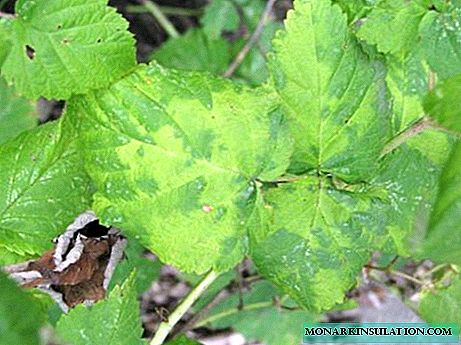
Symptoms of the viral mosaic weaken during the heat, but return with a cool
- Infectious chlorosis, or jaundice. It is expressed in the yellowing of the leaf plates, first between the veins, and then over the entire surface. But also the leaves may curl and wrinkle. The shoots of diseased plants are extended and thinned, and the berries acquire an irregular shape, become smaller and dry.

Infectious chlorosis, or raspberry jaundice, like many other viral diseases of this culture, is spread by aphids
- Mycoplasma growth, or witch's broom. Mycoplasmal disease, manifested in the appearance of many thin and short shoots in a raspberry bush. They have a chlorine color and deformed flowers, from which fruits rarely develop. A plant affected by mycoplasma growth can remain viable for 10 years, all this time being a source of infection. Sometimes there may be a short-term remission with the return of fruiting, but as a result, the disease prevails and the plant dies.
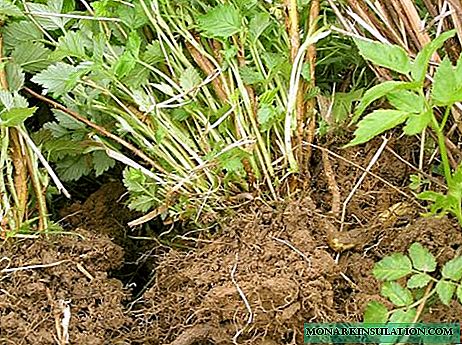
Mycoplasma growth - a deadly raspberry disease
Video: raspberry bushes affected by viral mosaic
Raspberry Pests
Great damage to raspberry plantings is caused by pests. One of the most dangerous of them is the stem gall midge. This insect is a small mosquito. His females in the spring lay their eggs in damage or natural cracks in annual raspberry shoots. Orange larvae hatch from them, which, when feeding, secrete various substances and pheromones, which provoke the formation of growths on the stalks of raspberry - galls.

3-4 generations of stem gall midge can develop in one season
The shoots damaged by the gall midge weaken, crack, and often dry out. They do not tolerate frost and suffer from winter withers. The quantity and quality of ripening fruit in bushes suffering from stem gall midges is significantly reduced.
Video: stem raspberry gall midge
Raspberries and other pests are affected. Among them:
- Raspberry-strawberry weevil. It looks like a grayish-black bug. In early spring, he eats leaves and anthers of buds. Female weevils eat holes in the buds and lay eggs, after which they bite the peduncle. As a result, the future flower falls or dries. After a week, larvae hatch from eggs, which before pupation feed on the inside of the bud for 25 days. In winter, raspberry-strawberry weevil hides under fallen leaves, lumps of soil or in its cracks.
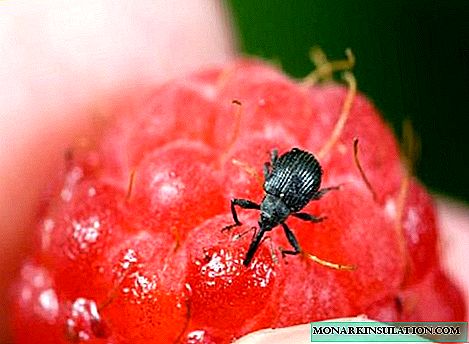
For winter, raspberry-strawberry weevil hides under fallen leaves or in lumps of soil
- Leaf and shoot aphids. Green sucking insects. Their size does not exceed 2 mm. They feed on cellular sap, as a result of which the green parts of the bush are twisted and deformed. In addition, aphids often act as carriers of viral diseases. The black eggs of these insects winter on annual shoots.
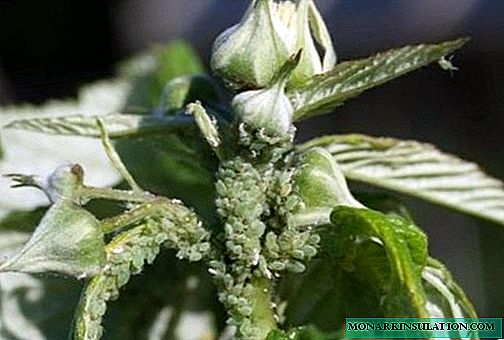
Aphid colonies usually appear on the stems and lower parts of raspberry leaves before flowering
- Raspberry beetle. This insect appears on raspberry bushes in early summer. Adults feed on the flesh of young leaves, stamens and pestles. Larvae damage berries by eating up drupes and gnawing passages in the stalks. Wormy fruits lose weight up to 50%, often rot and become unsuitable for eating. Beetles and their larvae winter in the soil near raspberry bushes at a depth of 10 cm.

Raspberry beetle larvae damage berries, making them unfit for consumption
- Raspberry tick. A microscopic pest that settles on the bottom of the leaves and feeds on cell sap. The main sign of its appearance is the yellowing of the leaf blades and their acquisition of irregular shapes. Raspberry female ticks hibernate under soil flakes.
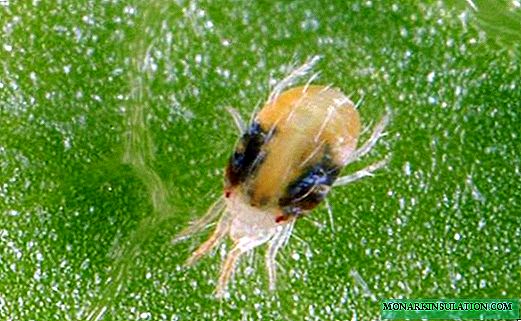
Raspberry mite feeds on cell juice
- Spider mite. Another sucking raspberry pest. It also settles on the bottom of the leaf blade and feeds on cell sap. It can be distinguished by the web, which with a large number of ticks entangles all parts of the plant. In addition, in the affected bush discoloration of damaged parts of the leaf is observed, gradually turning into marbling of the entire plate, their drying and decay. The spider mite is especially active on dry and hot days.
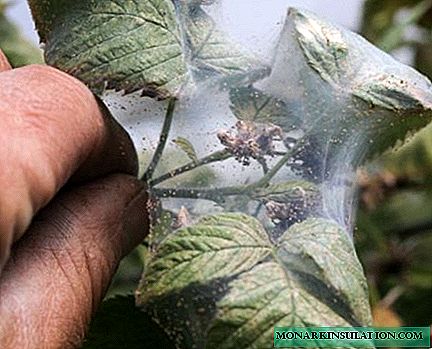
The spider mite is especially active on dry and hot days.
Pest and Disease Control
If raspberry bushes are diseased and damaged by pests, it is necessary to take measures to combat them as soon as possible.
How to defeat fungal diseases
Most fungal diseases of raspberries are easy to treat. Most often, Bordeaux liquid is used to treat affected bushes. It is a mixture of blue vitriol and slaked lime.The mechanism of action of Bordeaux fluid is based on the destructive effect of negatively charged copper ions on fungal spores. Slaked lime prevents their washing off and the appearance of chemical burns on plants.

Mix for the preparation of Bordeaux liquid is easy to find in any specialized store
Making Bordeaux Liquid
Bordeaux liquid is prepared immediately before use. This procedure involves several steps:
- 100 g of copper sulfate (for the preparation of 1% Bordeaux liquid) is mixed with a small amount of warm water.
- In a separate container, 150-200 g of lime is diluted with hot water to the consistency of sour cream (usually this requires about 1 liter of water).
- Each of the resulting solutions was brought to a volume of 5 l by adding cold water.
- A solution of lime (milk of lime) is filtered through cheesecloth.
- Slowly, constantly stirring, pour in a lime milk a solution of copper sulfate.
When preparing Bordeaux liquid, do not use metal utensils and disrupt the procedure, for example, pour lime milk into a solution of copper sulfate. If it is necessary to prepare a fungicide with a different concentration, the amount of substances is proportionally increased. So, for a 3% Bordeaux liquid, you need 300 g of copper sulfate and 500-600 g of lime.
The result should be a blue liquid with a slightly alkaline or neutral reaction.. You can check it by dropping a litmus test in the mixture, which is usually included in the kit for making Bordeaux liquid. With proper preparation, it should turn blue. If the litmus test became red, then the acidity of the liquid must be reduced by increasing the amount of milk of lime.
Video: the intricacies of preparing Bordeaux liquid
Fungicide treatment of bushes
A mandatory measure in the fight against fungal diseases of raspberries is early spring spraying on sleeping buds and autumn, after the leaves are discarded, treatment with 3% Bordeaux fluid. This fungicide can be replaced with other copper-based preparations sold in finished form:
- HOM (active ingredient copper chloride);
- Cuproxate (copper sulfate);
- Cuprozan (copper chloride and cineb).
Many gardeners also practice late autumn treatment of bushes with fungicides. It is carried out immediately after the leaves fall.
On industrial raspberry plantations, potent drugs that combine fungicidal, insecticidal and herbicidal properties are often used to combat fungal diseases.. These include:
- Nitrafen (2.2-3% solution);
- DNOC (1% solution).
When using these drugs, you need to remember about their danger to humans, as well as beneficial insects and microorganisms. They can not be sprayed with bushes with blossoming leaves, and the treatment of plantings with DNOC can be done only outside the settlements and no more than once every 3 years.
If necessary, the treatment of raspberries with fungicides is continued during the growing season, until the ovaries appear. For this, the following drugs are used:
- 1% solution of Bordeaux fluid or other copper-containing preparations;
- 0.5% phthalan solution;
- Kaptan's 0.5% solution;
- Tsineb's 0.7% solution.
It is not recommended to carry out more than 3 treatments of raspberry bushes per season.
Video: how to deal with purple raspberry spotting
What to do if bacterial cancer and viral diseases are detected
Raspberry bushes affected by bacterial root cancer, due to its low risk, do not require special treatments with chemicals. Significantly increase the rate of destruction of the causative agents of this disease by soil microorganisms by adding superphosphate or a mixture of ammonium sulfate with potassium salt to the ground. They help cleanse the soil of harmful bacteria and organic fertilizers.
Raspberry Viral Diseases Practically Undetectable. The only way to deal with them is to dig up the entire affected bush with subsequent burning. Experienced gardeners do not recommend planting raspberries in the area where infected plants were found for several years.
Means for the destruction of raspberry pests
To combat pests, raspberries use insecticides (kill insects) and acaricides (kill ticks). When processing raspberry bushes with them, it is necessary to remember safety measures. All work must be done with rubber gloves and a respiratory protective mask of 5-6 layers of gauze.

Raspberries are sprayed only in dry and calm weather.
Table: Raspberry Pest Control Products
| Pest | Effective drugs | Features of the processing |
| Stem gall midge |
|
|
| Strawberry Raspberry Weevil |
| before and after flowering raspberries |
| Raspberry beetle |
| according to instructions |
| Leaf and shoot aphids |
| during budding |
| Raspberry tick |
| spraying with a solution of colloidal sulfur is carried out before flowering, other drugs are used according to the instructions |
| Spider mite |
| according to instructions |
Preventive actions
In the fight against diseases and pests of raspberries, the prevention of their appearance is of great importance. The most important role in this matter is played by the choice of healthy seedlings that are resistant to common infections and do not suffer from insect attacks. In addition, such events show a good result:
- timely removal of sterilized shoots and underdeveloped or affected by diseases and pests stems;
- thinning plantings;
- burning fallen leaves;
- Autumn digging of raspberry;
- mulching plantings with manure in early spring;
- regular watering and top dressing raspberry bushes.
Table: Raspberry varieties resistant to diseases and pests
| Grade name | Disease and pest resistance | Ripening period | Productivity | Berry weight | The taste of berries (tasting score) | Tolerance Region | Short description |
| Apricot | Weakly affected by diseases and pests | Since the beginning of august | 117 c / ha | about 3 g | Sweet and sour, with a mild aroma (4.5 points) | Central |
|
| Brilliant | Resistant to all common diseases and pests | Mid early | 35 c / ha | 2.6-5.6 g | Pleasant |
|
|
| Yellow giant | Rarely affected by diseases and pests | Mid early | 30 c / ha | 1.7 to 3.1 g | Sweet (3.4 points) | Northwestern |
|
| Cascade Bryansk | Resistant to all fungal infections | Early | 3-3.5 kg per bush | 3-3.5 g | Sweet and sour, with a pronounced aroma (4.1 points) | Central |
|
| Meteor | Resistant to common fungal diseases | Early | 50-70 kg / ha | 2.3-3.0 g | Dessert |
|
|
| Early surprise | Resistant to most viral diseases. | Early | 60 kg / ha | 2.6-3.4 g | Sweet, sweet and sour |
|
|
| Shelf | Resistant to all diseases and pests, with the exception of verticillium wilting | From late July to early August | On average 10-12 t / ha, with intensive cultivation - up to 20 t / ha | 3.2-3.6 g, sometimes up to 6 g | Excellent, sweet and sour, with a pronounced aroma | - |
|
| Corner | It is highly resistant to all diseases and pests. | Early | 41 kg / ha | 1.8 g | Pleasant (4.1 points) | West Siberian |
|
Photo gallery: Raspberry varieties resistant to diseases and pests

- Apricot - the most delicious yellow raspberry variety
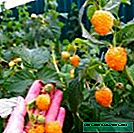
- Under favorable conditions, the Yellow giant may show signs of remontnost and bring a small re-crop at the tops of shoots
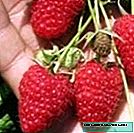
- Meteor Berries Freeze Free
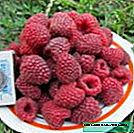
- The popular Regiment variety among farmers is the result of the work of Polish breeders

- Corner is a very unpretentious raspberry variety
Having noticed symptoms of diseases and damage by insect pests on raspberry bushes, do not despair. Most of them can be defeated by special means. Even easier to prevent their occurrence. To do this, it is enough to follow the rules of agricultural technology and choose varieties that are resistant to diseases and pests common in the region.

















